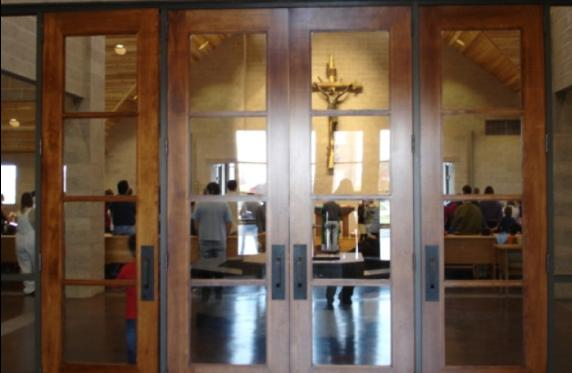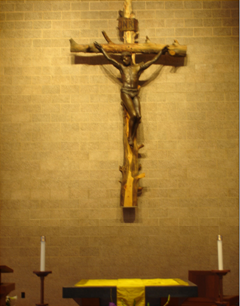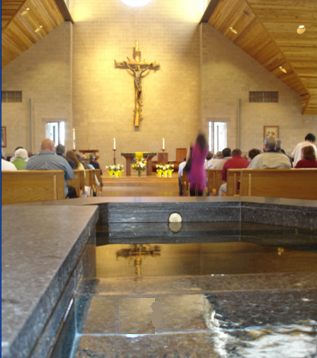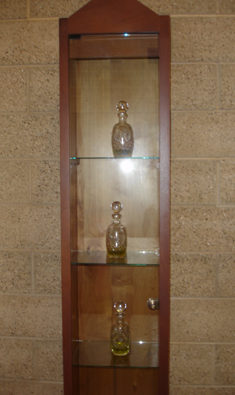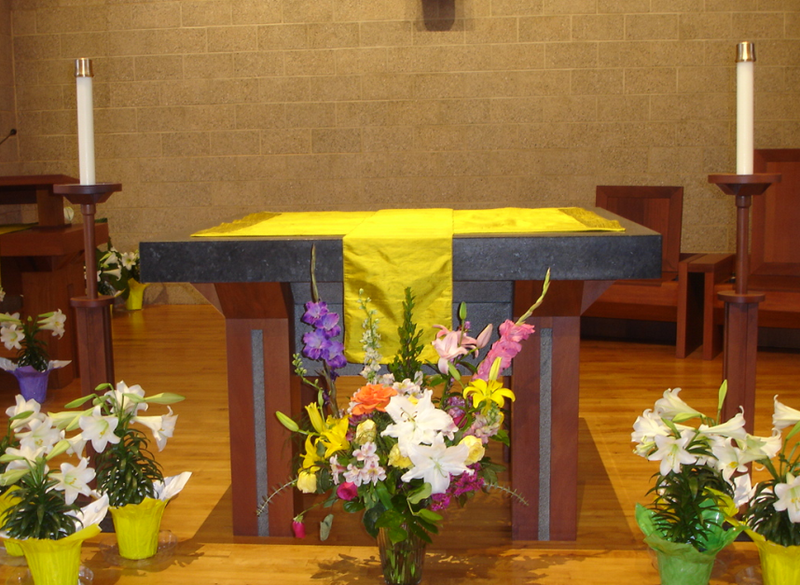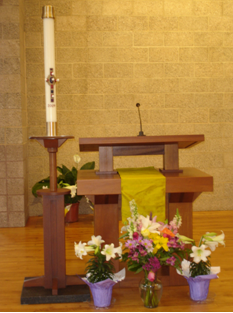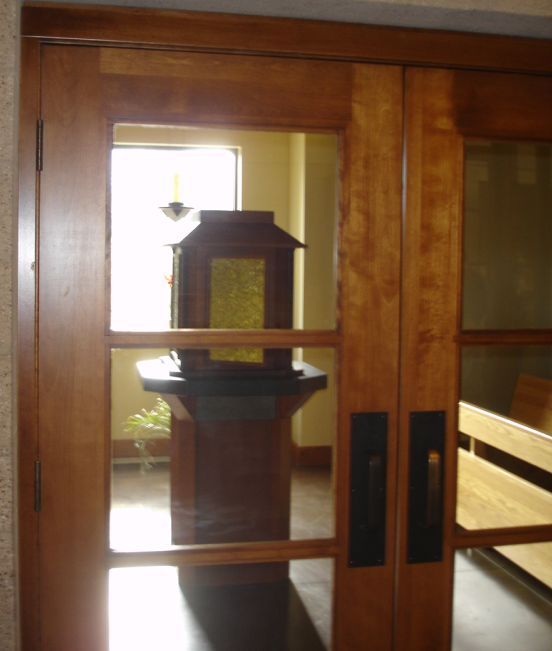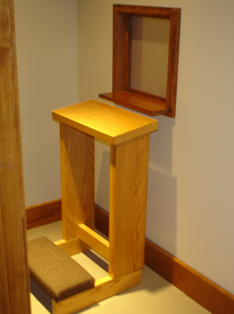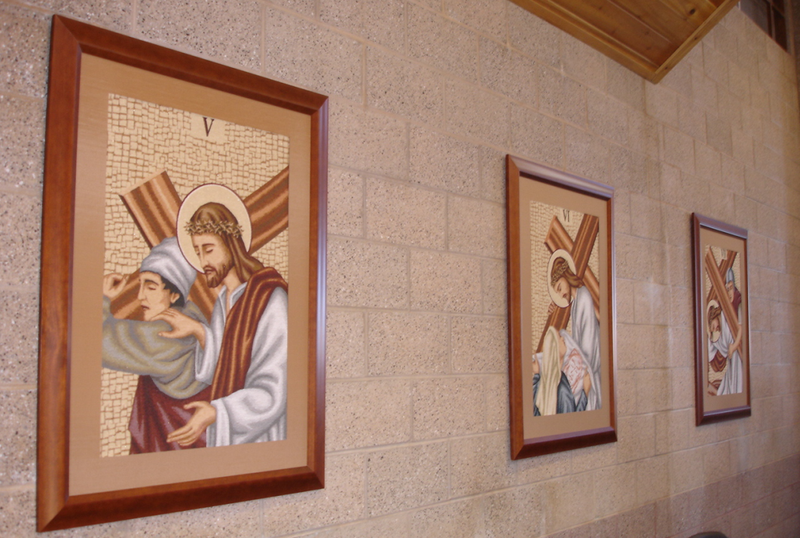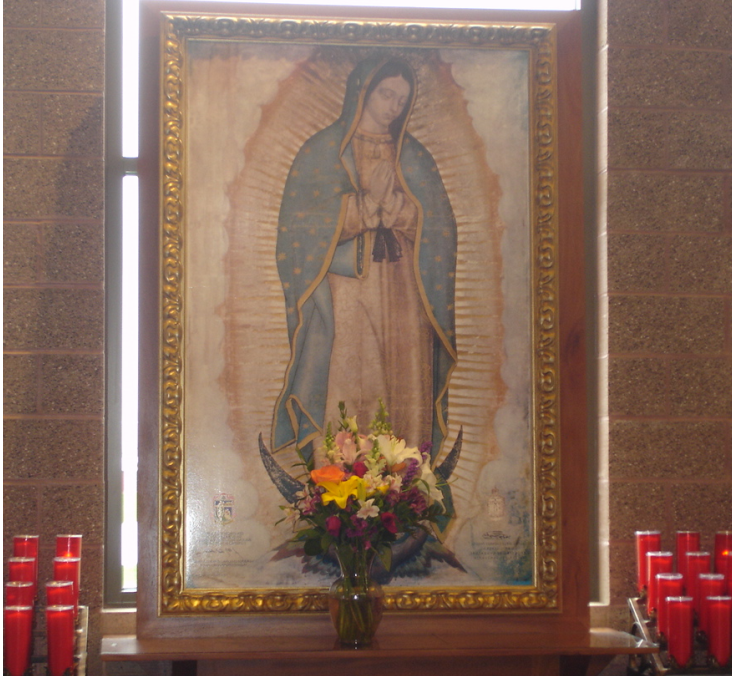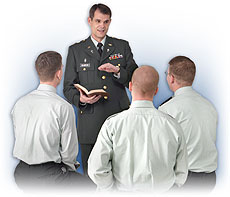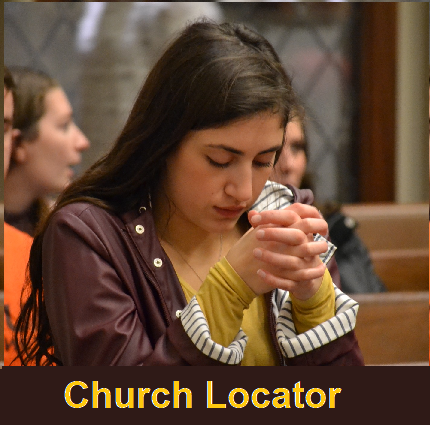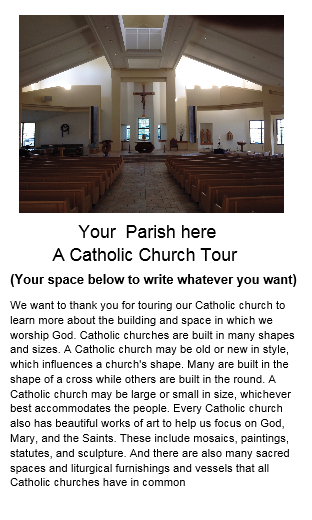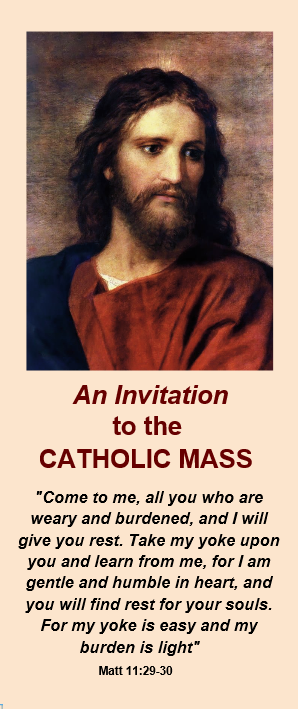A Catholic Church Tour
Allow me to help you with giving tours of your Church
Call Rich at 530-903-0121 / rchorrel@aol.com
The gathering space helps believers make the transition from everyday life to the celebration of the Mass, and after the Mass, it helps them return to daily life to live out the mystery that has been celebrated. In the gathering space, people come together to move in procession and to prepare for the celebration of the Liturgy. It is in the gathering space that many important liturgical moments occur: Parents, godparents, infants and adults are greeted for the celebration of Baptism; and Christians are greeted for the last time as their mortal remains are received into the Church building for the celebration of the funeral rites.
Built of Living Stones #95
The Entrance
The Sacrament of Baptism is foundational to our lives as Catholic Christians. As designed, the font will accommodate Baptism by immersion of infants and adults as encouraged in the rite of Baptism and other important Church documents. It will also function as the blessing font for each of us in the assembly, reminding us of our baptismal callings and gifts as we place our fingers into the blessed water and make the sign of the Cross in the name of the Father, Son and Holy Spirit. The stone construction reminds us of the permanence of Baptism in Christ. Its unavoidable location will remind us that we approach the Eucharist (Holy Communion) through the waters of Baptism. The “Living Waters” represent the new life we enjoy as baptized Catholics. The dark color granite, which lends a sense of mystery to the waters, reminds us of entering into the Paschal Mystery of Christ. (His teachings, His passion, His death and His glorious resurrection)
Baptismal Font
This special container for the Holy Oils is placed near the baptismal font and reconciliation chapel spaces because they are used in our Sacraments of Baptism and healing. We display the three sacred oils out of respect for their Sacramental symbolism; the Oil of the Catechumen which is used to bless and strengthen those preparing for Baptism; the Oil of the Sick which brings Jesus strength and healing to those who are joined with the suffering Christ in serious illness; and the Sacred Chrism which is used in celebrating the Sacraments of Baptism, Confirmation and Holy Orders. The word “Christ” means “anointed” And when one is anointed with Holy Oil it is a sign of a special relationship with Christ, the Anointed One.
Oils Ambry
“Now as they were eating, Jesus took bread, said the blessing, broke it, and gave it to His disciples and said “Take, eat; this is my body.” And He took a cup, and when he had given thanks, He gave it to them saying, “Drink of it, all of you; for this is my blood of the covenant, which is poured out for the many for the forgiveness of sins.” Mt. 26:28-28
The Altar table is both the place of the one Sacrifice and of banquet – ever ancient, ever new. This Holy Table is a symbol of Christ in our midst. We gather around the Altar Table of the Lord to give praise and thanksgiving, and to remember the saving action of Jesus in a way that makes Christ present for us today. Ken Griesmer
Altar Table
The Ambo is referred to in Church documents as the table of Gods Word. The place where the Word of God is proclaimed is to be worthy and prominent. From here we encounter the risen Lord in the proclamation of Sacred Scripture. It is also where prayers are offered for the Church and the world. The design of the Ambo suggests the relationship between the Liturgy of the Word, (Christ Speaks) and the Liturgy of the Eucharist, (Christ feeds.)
The Ambo
“Having wiped out the handwriting of requirements that was against us, which was contrary to us. And He has taken it out of the way, having nailed it to the Cross.” Col 2:13-14
“The Cross with the image of Christ Crucified is a reminder of Christ’s Passion. It draws us into His suffering for each of us and makes tangible our belief that our suffering when united with the passion and death of our Lord leads to redemption.” Built on Living Stones #91
The Cross in the Catholic Church, with Christ in His agony reminds us of our sin, what we have done, what we have failed to do, and what Christ has done for us. We ask the Church, all the Saints and Angels to pray for each of us to the Lord our God. The Crucifix shows us how much our God loves us by laying down His life for us. By pouring out His love and Mercy to all who come face to face with their own sin, it teaches us forgiveness. The Cross teaches us humility, which is the opposite of pride. It reminds us of who Christ is, and who we are.
“Jesus came to pay a debt He did not owe, because we owed a debt we could not pay” - Unknown
The Crucifix
In our tradition, we reserve the Blessed Sacrament for the sick and the dying, and for private prayer outside the liturgical celebration. The Tabernacle is to be a beautiful and worthy place for the reservation of the Eucharistic bread. This is an especially sacred space, a place where people may come for private prayer and meditation. The design of the Tabernacle relates to the Altar table through the use of details and materials, including stone. This reminds us where the Eucharist comes from and leads us back to the celebration of the Mass with the assembly of believers. The intention of the Blessed Sacrament Chapel is that people of all ages will feel free to come and spend some time quietly with the Lord. This is to be a refuge, a place of peace, a place of joy, a place to mourn. The word tabernacle means a dwelling place or a little tent where God dwells in a special form, in the consecrated hosts that remain from the Eucharist Liturgy. The lighted candle in the window lets all know of Christ’ presence in our Church, in our hearts and in our homes.
The Tabernacle
Jesus, my God and Savior, I offer you the examination of conscience which I am going to make that your divine justice may be glorified in it. I look to you with confidence for the grace to do it well, thus, in the spirit of charity, in order to please you, and to accomplish your Holy Will, together with every intention that can procure you the greatest honor and glory, I undertake it.
Patrick Cardinal Hayes, Archbishop of NY (1924)
In the Sacrament of penance, God forgives sins and restores broken relationships through the ministry of the Church…the Bishops of the United States have directed that the place for Sacramental Confession be visible and accessible, that it contain a fixed grill, and that it allow for confession face to face for those who wish to do so. Built of Living Stones #103
Reconciliation Room
Confession
The Stations of the Cross is a series of pictures representing certain scenes in the Passion of Christ, each corresponding to a particular incident.
The Stations may be of stone, wood, or metal, sculptured or carved, or they may be merely paintings or engravings. They are usually arranged at intervals around the walls of a church, though sometimes they are to be found in the open air, especially on roads leading to a church or shrine. The erection and use of the Stations did not become at all general before the end of the seventeenth century, but they are now to be found in almost every church
- Catholic Encyclopedia
“Therefore, since we are surrounded by so great a cloud of witnesses, let us also lay aside every weight, and sin which clings so closely, and let us run with perseverance the race that is set before us.” Hebrews 12:1
The images in a Catholic Church are of “family”. Our lives in Christ are built on the shoulders of the Holy family, the family of Saints, and the “family” that makes up the “community” of Christ. When Catholics bow to an Altar or a statue “family”, it’s always in reverence to Christ. If you have ever been to a monument that honors those who sacrificed for our country, you have probably knelt and may have prayed before them. Monuments, like the Cross and the image of the Holy Family are there to remind us all of the Sacrifice made to bring the “Family of Man” out of sins bondage. - Clive Scott Chisholm
Images in the Catholic Church
Stations of the Cross
Stories from Catholic Church Tours
Treasured Writing
Evangelization
- Isaiah 6:8b
The Church Tour Guide
The Church tour Invitation to Mass


